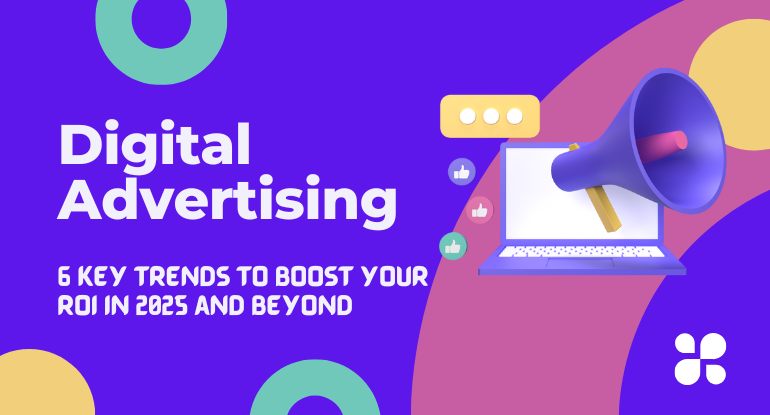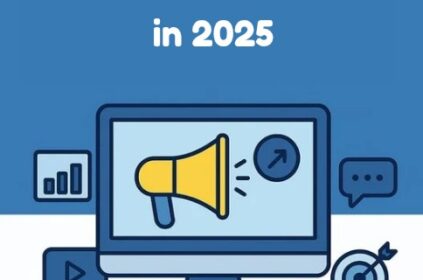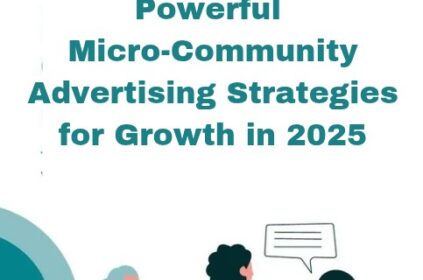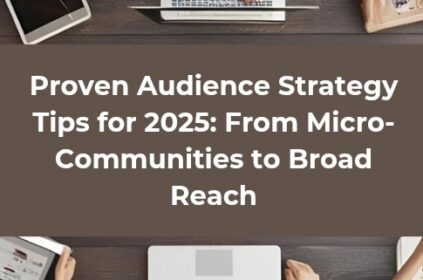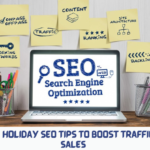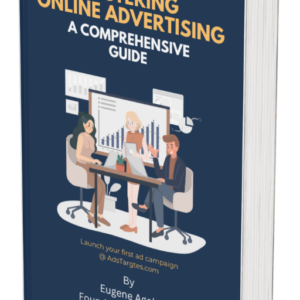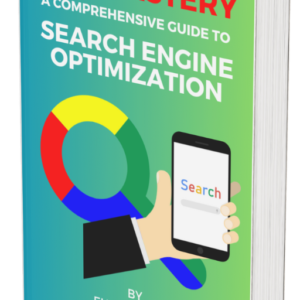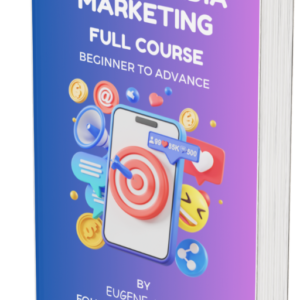Digital advertising is no longer just about placing banners on websites or running basic search ads. It has evolved into a sophisticated, data-driven strategy that connects businesses with their ideal customers across platforms, devices, and touchpoints.
At its core, digital advertising is about delivering the right message to the right audience at the right time—and doing it in a measurable, scalable, and impactful way. In 2025, digital marketing is more critical than ever. Consumer behavior is changing rapidly, with people demanding personalized, seamless experiences across their favorite platforms.
Meanwhile, technological advancements such as artificial intelligence, interactive content, and new ad formats are unlocking unprecedented opportunities for advertisers to innovate and drive results.
But with these opportunities come challenges. How can businesses stay ahead of the curve in a landscape that’s constantly shifting? How can they maximize their return on investment (ROI) while navigating increasing competition, tighter budgets, and evolving privacy regulations?
I have carefully crafted this guide to help you answer those questions and prepare your digital advertising strategy for the year ahead. We will start by laying a strong foundation with a modern understanding of what digital advertising entails. Then, we will explore six key trends shaping the future of digital advertising and how you can use them to boost your ROI in 2025 and beyond.
Whether you’re a digital marketer, a business owner with an online presence, a publisher, or an advertiser, this article is packed with actionable insights to help you thrive in the dynamic world of digital advertising.
What is Digital Advertising?
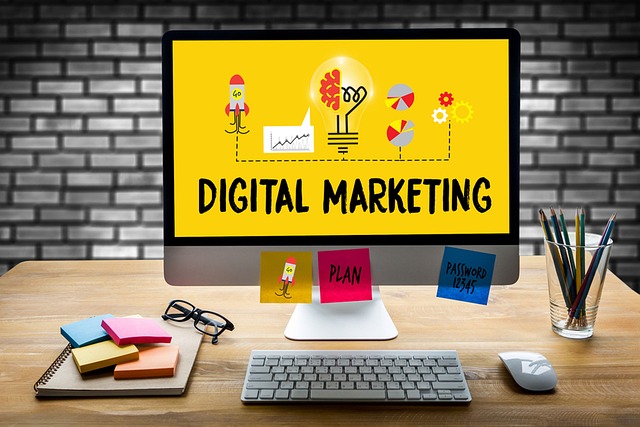
Digital advertising has come a long way from the days of static banner ads in the early 2000s. The first online advertisement appeared in 1994, marking the start of digital advertising. The oldest and first online banner ad by AT&T appeared on HotWired magazine with a run time of three months for a price of $30,000. The ad produced click-through rates of 44%. (Ad Tech Today)
Today, digital advertising spans across social media platforms, search engines, streaming services, mobile apps, and even wearable devices. The shift from broad, generic advertising to targeted, personalized campaigns has been pivotal.
Advertisers can now use data to tailor messages to individual preferences, ensuring greater relevance and engagement. This approach continues to dominate, driven by new trends like AI-enhanced targeting and the rise of interactive ad formats. (Forbes)
Core Elements of Digital Advertising
To fully grasp digital advertising, let’s break it into its essential components:
#1. Platforms:
These are the spaces where ads are delivered. Key platforms include:
- Social Media: Platforms like Facebook, Instagram, TikTok, and LinkedIn are goldmines for engagement.
- Search Engines: Google Ads and Bing Ads are staples for businesses targeting intent-driven searches.
- Display Networks: Banner ads and video placements across websites drive visibility.
#2. Formats:
Modern ads go beyond text and images. Popular formats include:
- Video Ads: Short-form videos on platforms like TikTok and YouTube dominate attention.
- Shoppable Ads: Seamless buying experiences directly within ads.
- Interactive Ads: Quizzes, AR experiences, and gamified content engage users deeply.
#3. Objectives:
Every campaign has a purpose. Common goals include:
- Building brand awareness.
- Generating qualified leads.
- Driving direct conversions or sales.
Why is Digital Advertising Essential for Businesses?

Digital advertising or Internet marketing is essential for every business. Unlike traditional advertising channels, digital ads offer:
#1. Scalability:
Whether you’re a small business or a large enterprise, digital advertising can be scaled to meet your specific goals. You can increase or decrease your budget as needed, without the massive overhead costs associated with traditional media.
#2. Precision:
Digital ads allow for highly-targeted campaigns. Advertisers can target audiences based on a variety of criteria, including demographics, online behavior, location, and even the time of day. This precision ensures your message reaches the most relevant audience.
#3. Measurability:
One of the most powerful aspects of digital advertising is the ability to track every action. You can measure clicks, impressions, conversions, and more, in real-time. This data allows for continuous optimization of your campaigns, making it possible to track ROI with accuracy.
#4. Cost-Effectiveness:
Digital ads can offer a higher ROI compared to traditional channels. The ability to set your own budget, optimize campaigns, and target specific audiences ensures that you’re spending your ad dollars wisely, which is particularly important for small businesses.
#5. Flexibility:
You can quickly change or tweak your ads based on performance. For example, if a certain audience is engaging better with a specific ad copy or format, you can quickly pivot and adjust without being locked into long-term commitments.
#6. Global Reach with Local Relevance:
Whether you’re targeting a local audience or a global one, digital ads allow you to reach consumers anywhere in the world. At the same time, you can make your messaging local and personalized through geotargeting.
#7. Interactivity & Engagement:
Digital ads, especially on platforms like social media, allow users to engage directly with the content. This interaction—such as liking, commenting, or sharing—boosts the visibility of your ads and encourages deeper connections with your brand.
#8. Integration with Other Marketing Channels:
Digital advertising can seamlessly integrate with other digital marketing efforts such as email marketing, social media, SEO, and content marketing. This unified approach provides a more cohesive customer journey.
#9. Speed & Real-Time Adjustments:
Unlike traditional advertising channels where you might wait weeks to see the impact of a campaign, digital ads provide instant feedback. If an ad is not performing well, you can adjust it immediately, making digital advertising one of the most agile and responsive marketing tools.
Setting the Stage for 2025
The digital advertising continues to evolve at lightning speed. Consumer behavior is shifting toward more personalized, seamless, and interactive experiences. Technologies like artificial intelligence, machine learning, and automation are becoming essential tools for staying competitive. (Forbes)
As we move into 2025, businesses that embrace innovation and adapt to changing consumer expectations will stand out. The next section explores the trends driving this transformation and how you can leverage them to maximize your ROI.
For businesses, this means the ability to connect with their audience in a way that’s both cost-effective and impactful. The next logical question is, how can you stay ahead in the evolving digital advertising?
6 Key Digital Advertising Trends to Boost Your ROI in 2025 and Beyond
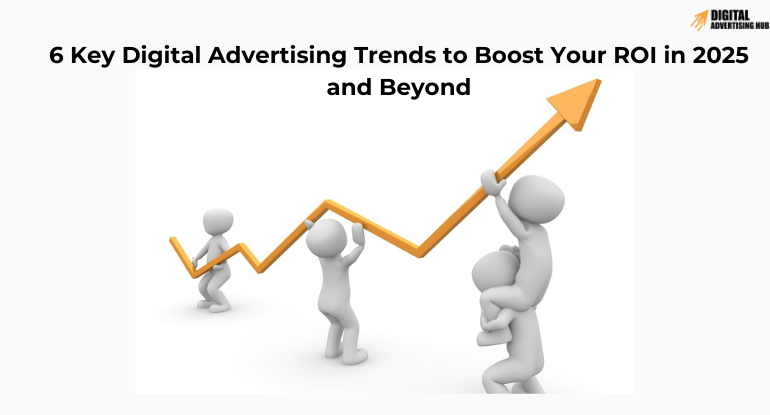
#1. How AI is Reshaping Digital Advertising in 2025
Artificial Intelligence (AI) and machine learning are no longer futuristic concepts—they are integral to digital advertising in 2025. These technologies are transforming how ads are created, targeted, and optimized, allowing advertisers to deliver highly personalized experiences at scale.
AI helps businesses tap into a wealth of consumer data to gain deep insights into their audience’s preferences, behaviors, and purchasing habits. By leveraging this data, advertisers can create highly-targeted campaigns that speak directly to the needs and desires of potential customers.
Machine learning algorithms, which continuously learn and adapt based on data, help optimize campaigns in real-time, ensuring that businesses are always delivering the most relevant ads to their audience.
The Role of AI in Ad Creation
One of the most exciting developments in digital advertising is AI’s role in ad creation. AI-powered tools can generate multiple variations of ad copy, images, and videos, all tailored to different audience segments. These tools analyze previous campaign performance, user behavior, and other variables to create ads that resonate with specific groups.
For example, an AI tool might automatically generate an ad targeting millennials that emphasizes fun and innovation, while creating a more professional, value-driven version for a corporate audience. This ensures that every ad speaks directly to the interests and tone of each target group, improving both engagement and conversion rates.
Smart Targeting and Personalization
AI takes targeting to a whole new level. By analyzing vast amounts of data, AI algorithms can identify the best times to display ads, predict which products a user might be interested in, and even personalize ad creatives based on individual preferences. This type of personalization drives better results by delivering relevant content at the right moment in a user’s journey.
Machine learning algorithms also allow advertisers to refine their targeting strategies over time. As the system gathers more data, it continually improves its predictions, helping advertisers optimize their campaigns for better performance.
1. Dynamic Pricing: AI can adjust pricing in real-time based on user behavior, market trends, and competitor activity, ensuring that businesses remain competitive.
2. Predictive Analytics: By forecasting future customer behavior, AI helps businesses anticipate needs, enabling them to target the right audience with the right message at the perfect time.
3. Hyper-Personalization: Beyond basic targeting, AI enables the creation of truly personalized experiences. For instance, AI can show users tailored offers, custom recommendations, and even personalized landing pages based on previous interactions with the brand.
Optimizing Campaigns in Real-Time
One of the most powerful aspects of AI in digital advertising is its ability to optimize campaigns in real-time. Traditionally, advertisers would need to wait days, weeks, or even longer to see how their campaigns were performing and make adjustments accordingly. With AI-powered automation, advertisers can adjust their bids, budgets, and targeting on the fly, ensuring maximum efficiency and effectiveness.
Machine learning algorithms continuously analyze the performance of different ads and optimize them for factors such as click-through rate (CTR), cost-per-click (CPC), and conversion rate (CR). This constant optimization helps improve ROI by ensuring that businesses are getting the most value from their ad spend.
Real-World Examples of AI in Action
Several brands are already harnessing the power of AI to revolutionize their digital advertising strategies:
#1. Netflix: AI is used to recommend content based on viewing history, ensuring users are served the most relevant suggestions. This personalization keeps viewers engaged and increases time spent on the platform.
#2. Amazon: AI algorithms analyze purchase history and browsing behavior to suggest products tailored to individual customers. This level of personalization has helped Amazon become a leader in e-commerce.
#3. Facebook/Meta: Facebook’s advertising platform uses AI to deliver ads to users most likely to engage, based on their behaviors and interactions across the platform. This level of precision allows advertisers to achieve high ROI with minimal spend.
The Future of AI in Digital Advertising
As AI and machine learning continue to evolve, the capabilities of digital advertising will only expand. In the near future, AI could take over many aspects of the ad creation and optimization process, allowing businesses to automate nearly every aspect of their campaigns.
Looking ahead, AI could help advertisers create even more immersive and interactive experiences using technologies like augmented reality (AR) and virtual reality (VR). By blending AI with AR/VR, advertisers can craft experiences that are not only personalized but also deeply engaging, allowing consumers to interact with products in entirely new ways.
As these technologies become more sophisticated, businesses that embrace AI-powered advertising will have a significant edge in a competitive marketplace.
As AI and machine learning continue to elevate digital advertising, they are becoming vital in helping businesses reach their customers with precision. However, even the best ad campaigns can fall short if the sales process is cumbersome or disconnected. To truly maximize ROI in 2025, businesses need to simplify their sales process while maintaining high engagement. This is where automation in the sales funnel comes in.
#2. The Need for a Streamlined Sales Process
As consumers become more accustomed to digital experiences, their expectations grow. They want the path from discovering a product to purchasing it to be seamless, quick, and intuitive. For your business, this means optimizing every step of the sales funnel to ensure minimal friction. From the first interaction with a digital ad to completing the purchase, any unnecessary steps or delays can result in lost sales.
Automation is the key to addressing this challenge. By automating repetitive tasks, personalizing interactions, and using data to guide the customer through the funnel, businesses can improve efficiency, increase conversion rates, and enhance the overall customer experience.
The Role of Automation in Streamlining the Sales Funnel
Automation tools have revolutionized the way businesses engage with prospects and customers. Here’s how automation can help simplify the sales process:
#1. Personalized Messaging at Scale:
Through automation, businesses can create dynamic ad creatives that adapt to the interests, behaviors, and previous interactions of their target audience. This ensures that customers receive personalized content that speaks directly to their needs, increasing the likelihood of conversion.
For example, if a customer has previously interacted with an ad for a product, the next ad they see could showcase a related product or offer a special discount, driving them closer to making a purchase.
#2. Automated Lead Nurturing:
Many potential customers don’t convert right away. Lead nurturing through automated emails, follow-up messages, or retargeting ads can help keep prospects engaged and guide them down the funnel.
Automation allows businesses to send timely, relevant messages that match the customer’s stage in the buyer journey. This ensures that customers are never left hanging, and businesses can keep building relationships until a conversion is made.
#3. Retargeting Ads with Seamless Conversion Paths:
One of the best uses of automation is retargeting. By using automated retargeting strategies, businesses can remind users who have interacted with an ad but didn’t convert to return and complete their purchase.
Retargeting works by showing personalized ads based on past interactions, such as abandoned shopping carts, product views, or website visits. These ads can be automated to run at key moments when the customer is most likely to make a purchase, providing a simplified and effective sales process.
#4. Automating Payment and Checkout:
Once the customer is ready to make a purchase, the sales process shouldn’t slow down with complicated checkout steps. Automated payment systems and easy-to-navigate checkout pages are crucial to ensuring that the customer can purchase quickly and efficiently. Features like one-click purchases, stored payment information, and simplified forms eliminate the barriers that often lead to cart abandonment.
Benefits of Sales Process Automation
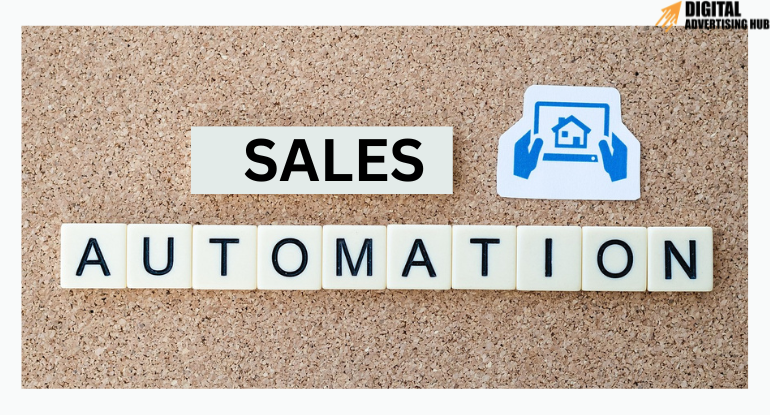
The benefits of automating your sales process go beyond simply making it easier for customers to buy. Here’s how automation impacts your bottom line:
#1. Increased Efficiency:
By automating tasks such as follow-up emails, lead scoring, and retargeting, businesses save time and resources. Marketing teams can focus on creating high-quality content and strategies, rather than getting bogged down by repetitive tasks. This leads to faster response times and a more agile business.
#2. Better Conversion Rates:
Automation ensures that no leads fall through the cracks. With personalized messages sent at the right time, businesses can convert more leads into paying customers. Automated retargeting, for example, has been shown to boost conversion rates by reminding potential buyers about products they are interested in.
#3. Improved Customer Experience:
A simplified sales process makes it easier for customers to find and purchase what they need, without unnecessary delays. An intuitive, automated system helps customers feel more in control of their purchase journey, resulting in higher satisfaction and increased loyalty.
Real-World Example: How Businesses Are Using Automation
Many successful brands are already reaping the benefits of automation in their sales processes. For example, e-commerce giants like Amazon use automation to recommend products based on browsing history, track abandoned carts, and send personalized reminders to complete purchases. Similarly, Shopify provides e-commerce businesses with automated tools to retarget customers, offer discounts, and streamline the checkout experience—all of which contribute to boosting conversion rates.
Startups and small businesses are also embracing automation. Mailchimp and HubSpot, for instance, offer user-friendly tools that allow businesses to automate email campaigns, set up automated workflows, and manage customer relationships efficiently.
The Future of Sales Automation
In 2025 and beyond, the trend toward automation in digital advertising will only intensify. As technologies like artificial intelligence and machine learning continue to advance, the ability to automate even more aspects of the sales process will become commonplace. Businesses that embrace this shift will be able to deliver even more personalized, efficient, and seamless customer experiences.
In the near future, we can expect hyper-automation—where nearly every aspect of the customer journey, from discovery to purchase, is automated. The integration of AI with tools like chatbots, predictive analytics, and dynamic ad creation will make the sales process faster, smarter, and more intuitive, offering businesses an unprecedented opportunity to connect with their audience and increase ROI.
#3. Video Ads: The Dominant Format in 2025
Why Video Ads Are Essential for Digital Advertising Success
In 2025, video content continues to dominate the digital landscape, and video ads are at the forefront of driving consumer engagement. With the rise of platforms like TikTok, Instagram, YouTube, video has become the preferred medium for both users and advertisers. Whether it’s for brand awareness, customer education, or direct sales, video ads have proven to be one of the most powerful formats for capturing attention and driving conversions.
As users increasingly consume video content on social media and other platforms, businesses have an incredible opportunity to engage potential customers where they are spending the most time. Research shows that consumers are more likely to engage with video content over static images or text, making video ads a key component of any effective digital advertising strategy.
The Rise of Short-Form Video Ads
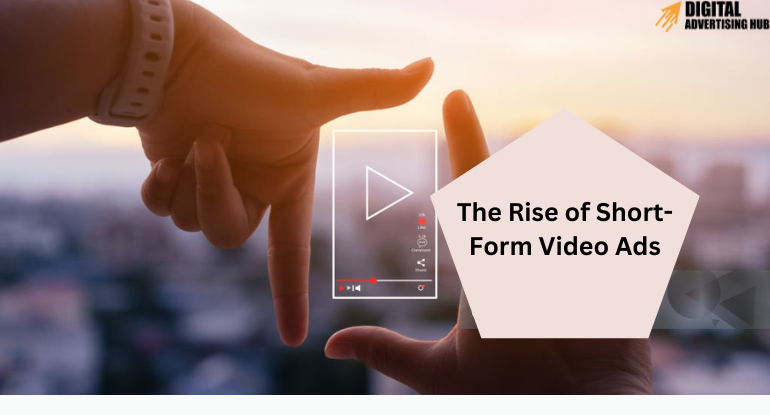
One of the most significant trends in video advertising to watch out for in 2025 is the dominance of short-form video ads. Platforms like TikTok and Instagram Reels have popularized 15 to 30-second videos, with users expecting fast, engaging, and easily consumable content. Short-form video allows businesses to convey key messages in a brief and impactful way, which is crucial in an age where attention spans are shorter than ever.
Short-form videos are perfect for grabbing attention quickly and compelling users to take action. For example, a brief 15-second video showcasing a new product, accompanied by an irresistible call to action (CTA), can be enough to drive clicks, shares, and conversions.
Businesses are also experimenting with user-generated content and influencer collaborations, leveraging short-form videos to boost brand visibility and credibility.
Interactive and Shoppable Video Ads
As digital advertising continues to evolve, interactive video ads are becoming increasingly popular. These ads offer users the ability to engage with the content in real-time. Features like clickable links, product tags, and interactive polls or quizzes are taking the user experience to the next level.
Platforms like Instagram and Facebook have integrated shoppable video ads, where users can click directly on the video to purchase products in real-time. This seamless integration of e-commerce with video ads creates a frictionless journey for customers, increasing the likelihood of conversions. Shoppable video ads not only showcase products in action but also provide an immediate call to action, reducing the steps needed to make a purchase.
For example, imagine watching a 30-second video of a beauty influencer demonstrating a skincare routine. In the video, the products are tagged, and a simple tap takes the viewer directly to the product page where they can purchase with ease. This feature blends entertainment and e-commerce, delivering a highly effective strategy to increase ROI.
The Power of Storytelling in Video Ads
Effective video ads tell a story—one that resonates with the audience’s emotions, values, and needs. In 2025, brands that focus on creating compelling narratives are more likely to capture their audience’s attention and build lasting connections. Storytelling allows businesses to go beyond just selling products and create experiences that engage viewers on a deeper level.
Whether through humor, inspiration, or authenticity, the ability to connect emotionally with the audience is crucial. A well-crafted story humanizes the brand, fosters trust, and makes the ad more memorable. Nike and Coca-Cola have mastered this approach, using video ads to tell inspiring stories that align with their brand values, leaving a lasting impact on their customers.
#4. Micro-Moments and Hyper-Personalization
The Power of Micro-Moments
It is true that consumers make decisions in the blink of an eye. These decision-making instances, known as micro-moments, occur when users turn to their devices with a specific need: to know, go, do, or buy. For example:
- “I want to know” moments: A user searches for product reviews or educational content.
- “I want to go” moments: A user looks up nearby services or store locations.
- “I want to do” moments: A user seeks tutorials or step-by-step guides.
- “I want to buy” moments: A user actively searches for products and services to purchase.
To succeed in 2025, businesses must identify and capitalize on these micro-moments by delivering highly relevant and timely content. Customers expect instant answers and seamless experiences that address their immediate needs, making these moments pivotal for engagement and conversions.
Hyper-Personalization: Tailoring Experiences to Individual Needs
Hyper-personalization takes traditional personalization to the next level by leveraging real-time data, artificial intelligence (AI), and machine learning (ML) to create highly customized user experiences. Gone are the days of one-size-fits-all advertising; today’s consumers demand messages and offers that resonate with their specific preferences, behaviors, and circumstances.
For example, a digital marketer can use hyper-personalization to deliver:
#1. Dynamic content: Ads that change based on user behavior (e.g., a recommendation engine suggesting products similar to recent purchases).
#2. Personalized offers: Exclusive discounts or promotions tailored to individual shopping habits.
#3. Context-aware messaging: Notifications or ads triggered by a user’s location, time of day, or browsing patterns.
Tools That Drive Micro-Moments and Hyper-Personalization
Achieving success in this area requires leveraging advanced technologies and platforms. Some key tools include:
#1. Customer Data Platforms (CDPs): Tools like Salesforce and Adobe Experience Cloud help unify customer data from multiple touchpoints, enabling precise targeting.
#2. AI and ML Algorithms: Platforms like Google Ads and Meta Ads use machine learning to deliver personalized ad experiences in real-time.
#3. Marketing Automation Tools: Platforms like HubSpot and Marketo automate the delivery of hyper-personalized content across channels, ensuring consistency and efficiency.
How Businesses Can Capitalize on Micro-Moments
#1. Be Visible at the Right Time
Businesses need to ensure their ads are present when users are actively searching for solutions. For example, optimizing for local search ensures your business shows up during “I want to go” moments.
#2. Invest in Fast, Mobile-Friendly Platforms
Most micro-moments happen on mobile devices, so a responsive website and fast-loading ads are critical. A slow experience could mean losing a potential customer.
#3. Leverage Predictive Insights
Use predictive analytics to anticipate your audience’s next action. For example, an online travel agency might show hotel offers based on a user’s recent flight booking.
#4. Deliver Seamless Cross-Channel Experiences
Ensure customers receive consistent messaging across platforms. For instance, if a user abandons their cart on your website, retarget them with a hyper-personalized ad showcasing the exact product they left behind.
The ROI of Hyper-Personalization
Investing in hyper-personalization and addressing micro-moments offers measurable benefits:
#1. Higher Engagement Rates: Personalized ads see significantly higher click-through rates compared to generic ones.
#2. Increased Conversions: Meeting customers’ needs at the right time improves the likelihood of purchase.
#3. Stronger Customer Loyalty: By making customers feel understood, businesses can foster deeper relationships and long-term loyalty.
#4. Better Resource Allocation: Hyper-personalization ensures your advertising budget is spent reaching the most relevant audience segments.
Real-World Example: Hyper-Personalization in Action
An example of hyper-personalization done right is Amazon, which uses purchase history, browsing behavior, and predictive analytics to deliver tailored product recommendations. This strategy not only drives repeat purchases but also increases the average order value.
Another example is Spotify, whose hyper-personalized playlists, such as “Discover Weekly,” cater to users’ unique listening habits. By making the user experience feel bespoke, Spotify fosters loyalty and keeps users engaged.
#5. The Resurgence of Contextual Advertising
As privacy regulations tighten and third-party cookies phase out, contextual advertising is making a powerful comeback. Once overshadowed by behavioral targeting, this approach now leverages AI to deliver ads based on the content users are consuming at the moment.
For example, instead of relying on a user’s browsing history, contextual targeting ensures a fitness ad appears on a health blog or a travel ad shows up in an article about vacation tips. The method respects user privacy while delivering highly relevant content.
Modern advancements in natural language processing (NLP) and machine learning have transformed contextual advertising into a sophisticated strategy. It’s no longer limited to matching keywords; today’s algorithms understand intent, tone, and sentiment, creating a deeper connection between the ad and its environment.
The Benefits of Contextual Advertising
Contextual advertising aligns perfectly with consumer intent, ensuring that your ad reaches the right audience in the right environment. Here’s how it drives ROI:
#1. Increased Relevance: Ads placed in relevant contexts are more likely to resonate with viewers, leading to higher engagement rates.
#2. Privacy Compliance: By targeting based on content rather than personal data, businesses comply with privacy regulations like GDPR and CCPA.
#3. Improved Brand Safety: With AI-powered tools, brands can ensure their ads appear in safe and appropriate environments.
#4. Cost-Effectiveness: Contextual ads eliminate the need for expensive data collection and analysis, reducing campaign costs while maintaining effectiveness.
How to Implement Contextual Advertising
#1. Identify Contextual Opportunities: Analyze your target audience and the types of content they consume. Tools like Google Ads Display Planner can help pinpoint relevant websites and topics.
#2. Use AI-Powered Platforms: Leverage tools such as GumGum or Channel Factory that specialize in advanced contextual targeting. These platforms analyze video, text, and images to identify suitable ad placements.
#3. Create Environment-Specific Ads: Customize your creatives to fit the tone and style of the context they will appear in. For instance, ads on a tech blog might emphasize innovation, while those on a parenting site might focus on trust and safety.
#4. Monitor Performance: Use analytics tools to track engagement and ROI from contextual campaigns. Refine your strategy based on what works best.
#6. The TikTok-ification of Ad Creativity
The meteoric rise of TikTok has redefined how brands approach ad creativity. In 2025, attention spans continue to shrink, and short-form, authentic, and engaging content dominates digital platforms. This “TikTok-ification” of advertising has spilled over into other platforms, influencing content on Instagram Reels, YouTube Shorts, and even traditional advertising spaces.
What sets this trend apart is its focus on relatability over polish. Consumers prefer ads that feel real and human, blending seamlessly into their social feeds rather than interrupting them. This shift emphasizes creativity, storytelling, and cultural relevance over high-budget productions.
How Short-Form Content Drives Results
Short-form, trend-driven ads offer a direct path to higher ROI:
#1. Increased Engagement: Relatable and entertaining content garners likes, shares, and comments, boosting visibility through organic reach.
#2. Better Targeting: Platforms like TikTok use advanced algorithms to show ads to highly relevant audiences based on their activity and preferences.
#3. Cost-Effectiveness: Producing short-form ads is often less expensive than traditional advertising, making them ideal for businesses with smaller budgets.
#4. Improved Brand Recall: Quick, impactful stories resonate with audiences, making your brand more memorable.
Creating Effective TikTok-Style Ads
#1. Understand the Platform Culture: Each platform has its own vibe. TikTok thrives on authenticity, humor, and trends. Observe what works and adapt your content to match.
#2. Leverage Trends: Stay on top of trending hashtags, sounds, and challenges. Incorporate them into your ads to feel relevant and timely.
#3. Focus on Storytelling: Even in 15 seconds, craft a beginning, middle, and end. Create a narrative that resonates emotionally with your audience.
#4. Include a Clear CTA: While the content should feel organic, guide viewers toward your desired action, whether it’s visiting your website, downloading an app, or making a purchase.
#5. Test Different Styles: Experiment with humor, tutorials, user-generated content, and influencer collaborations to see what resonates best with your audience.
Conclusion
In 2025, digital advertising continues to evolve as a dynamic and powerful tool for businesses to connect with their audiences, drive engagement, and boost ROI. From understanding the foundations of digital advertising to embracing trends like AI-driven personalization, interactive content, and sustainability, staying ahead in this space demands both adaptability and innovation.
Each trend explored in this guide—simplifying the sales process, leveraging micro-moments, capitalizing on TikTok-style creativity—highlights the transformative opportunities digital advertising offers in this new era.
Success in digital advertising requires more than just knowledge—it demands action.
To further your expertise, consider diving deeper into digital advertising with curated resources, courses, and expert insights. Check out our comprehensive online course on DigitalAdvertisingHub.com to unlock actionable strategies for mastering the art of digital advertising.
Online advertising is more than a marketing tool; it’s a pathway to sustainable growth, brand loyalty, and long-term success. By understanding its evolving dynamics and adopting these trends, you can position your business to thrive in 2025 and beyond.
Start by implementing one trend today and watch how it transforms your ROI. The future of digital advertising is here—are you ready to embrace it?

